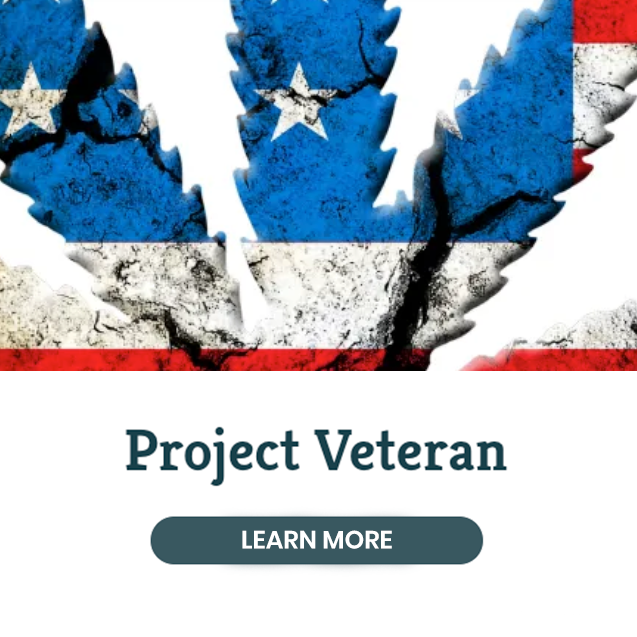Follow Us
Join our newsletter
SIGN UP FOR OUR LOYALTY PROGRAM
Sign Up
FOR WEEKLY UPDATES CRAFTED JUST FOR YOU
Local Roots
In The Community
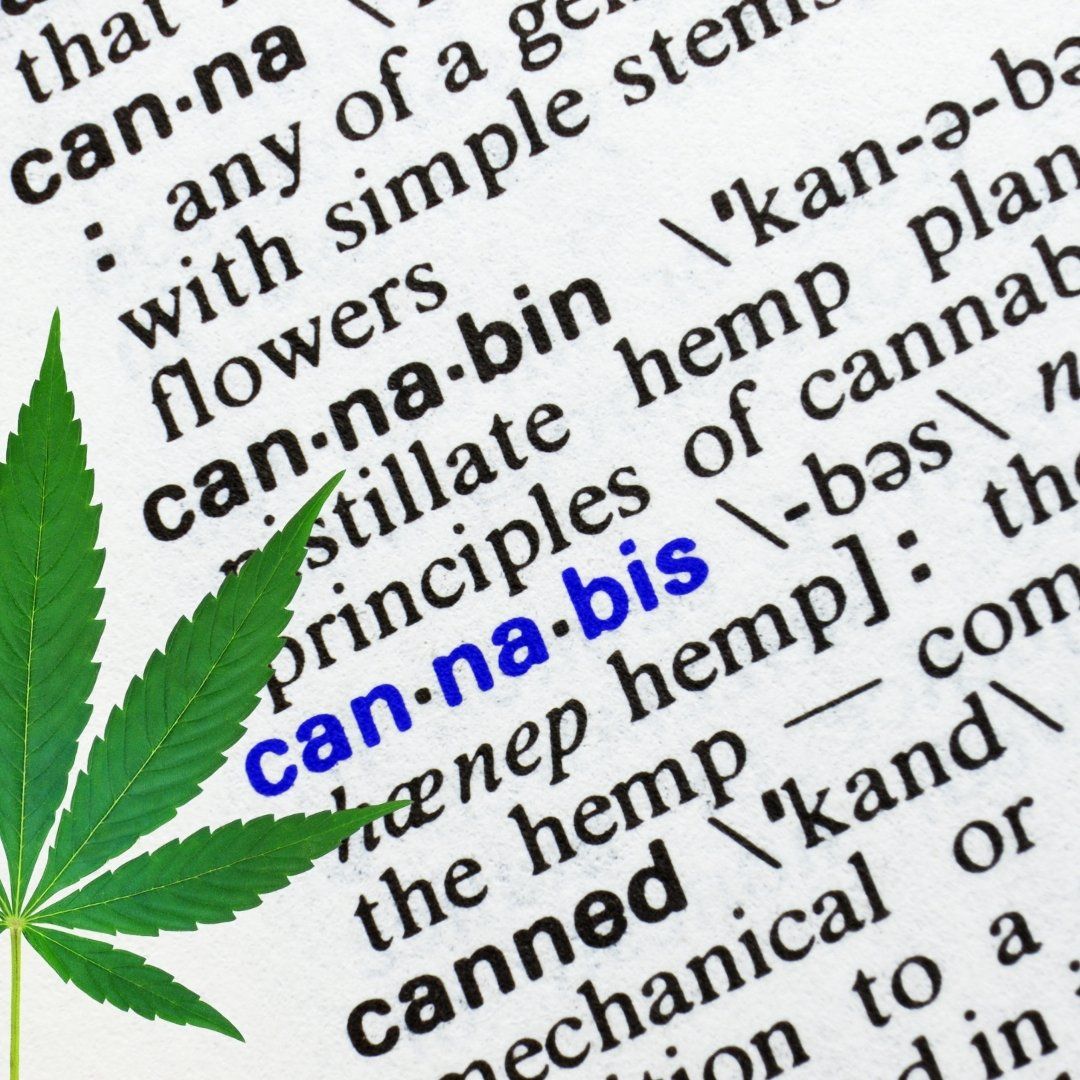
By Nakiesha Jordan
•
March 15, 2021
Starting off new to cannabis use can be intimidating with so many new terms to learn. Cannabinoids, terpenes, Endocannabinoid System, and more can appear confusing or complex but there is no reason to feel overwhelmed! This blog will break down some of the common cannabis terms so that you can use this knowledge to feel more empowered when selecting cannabis products! In order to understand the foundation of common cannabis terms you will first need to know what the Endocannabinoid System is. The Endocannabinoid System is a complex cell signaling system that regulates body functions such as homeostasis, your nervous system, and your immune system. The Endocannabinoid System also produces the runner’s high. The Endocannabinoid System involves endocannabinoids, receptors, and enzymes that help your body to function properly. The main endocannabinoid receptors are CB1 and CB2 receptors. CB1 receptors are found predominantly in your Central Nervous System where as CB2 receptors are found in your Peripheral Nervous System. Enzymes are useful for breaking down endocannabinoids once they have fulfilled their purpose. Now that you know a bit about the Endocannabinoid System let’s discuss how cannabinoids such as THC and CBD interact with it! Cannabinoids are the compounds within the cannabis plant that produce effects within the body by interacting with endocannabinoid receptors. Cannabinoids can regulate how cells communicate by directing how they send, receive, or translate their functions. Some common cannabinoids include CBN, CBG, CBC, THCV, CBD, and THC. THC, otherwise known as Tetrahydrocannabinol, is the most common psychoactive cannabinoid within the cannabis plant. It is the cannabinoid that interacts with the Endocannabinoid System producing a feeling of being euphorically high. CBD, known also as Cannabidiol, is the non-psychoactive cannabinoid within the cannabis plant that may offer therapeutic benefits. CBD can block out THC from interacting with endocannabinoid receptors when taken in larger amounts than THC which may help lessen its effects. When THC and CBD are taken in equal amounts the effects of THC are heightened and may produce a more balanced and pleasurable high. TAC is another acronym that is seen on a dispensary’s menu. TAC is Total Active Cannabinoids. It measures the potency of the product through adding the amounts of the cannabinoids, terpenes, and other compounds present within it. What are Terpenes you ask? Terpenes are the aromatic compound of the cannabis plant. Terpenes are what gives each cannabis strain its own unique taste, smell, and effects. Terpenes are known to possibly provide therapeutic effects. Terpenes are oftentimes more important than a high THC content when choosing the affects you wish to experience. When terpenes and cannabinoids work synergistically together to create many unique benefits and effects caused by the full spectrum aspect within a product it is called the Entourage Effect. Terpenes and cannabinoids each have different boiling points. The different temperatures when heating cannabis flower or oil causes different terpenes and or cannabinoids to be more bioavailable for your body. When in doubt about what temperature to use always opt for a lower temperature setting. There are three different strains that cannabis can be categorized in. Cannabis Sativa, Cannabis Indica, and Cannabis Ruderalis (Hybrid). Cannabis Sativa plants tend to have longer leaves and grow in warmer climates. The effects of Sativa strains may be energizing, uplifting, and may have more cerebral effects. Indica strains tend to have shorter leaves and grow in cold climates. Indica strains may produce sleepy and more body focused effects. Hybrid strains are the combination of Indica and Sativa strains and may have more balanced, relaxing, and or creative effects. Some other terms you may see or hear in a dispensary tend to be in regard to products. Cannabis flower is the bud of the cannabis plant, pre-rolls are cannabis filled cigarettes, topicals are cannabis infused lotions and body care items, and edibles are cannabis infused food, drinks, capsules, or oils. Some terms you may not be familiar with are chillums and concentrates. Chillums are glass pipe pieces that can come pre-packed with flower. Cannabis concentrates are extracted THC products that are intended to be smoked or vaporized. Concentrates come in different textures and are often very potent. They can be smoked sandwiched in between flower or vaporized in a dab rig or concentrate vaporizer pen. Cannabis concentrates, like cannabis flower, can be decarboxylated to make your own edibles! Many people start with vape cartridges before moving to concentrates, however there are a few that are less potent. Kief, moonrocks, and hash rosin are great when transitioning to trying concentrates. Kief is the extracted trichomes from the cannabis plant and can be sprinkled and smoked on top of flower. Moonrocks are cannabis flower rolled in cannabis oil and kief and can be smoked with flower. Avoid placing your moonrock in a grinder! Now that you know a bit about some of the common terms used within the cannabis industry you can share your knowledge with others or use it to discover the best products for you! If you still have questions don’t be shy to reach out to your budtender when you are placing your order. We are always here to help!
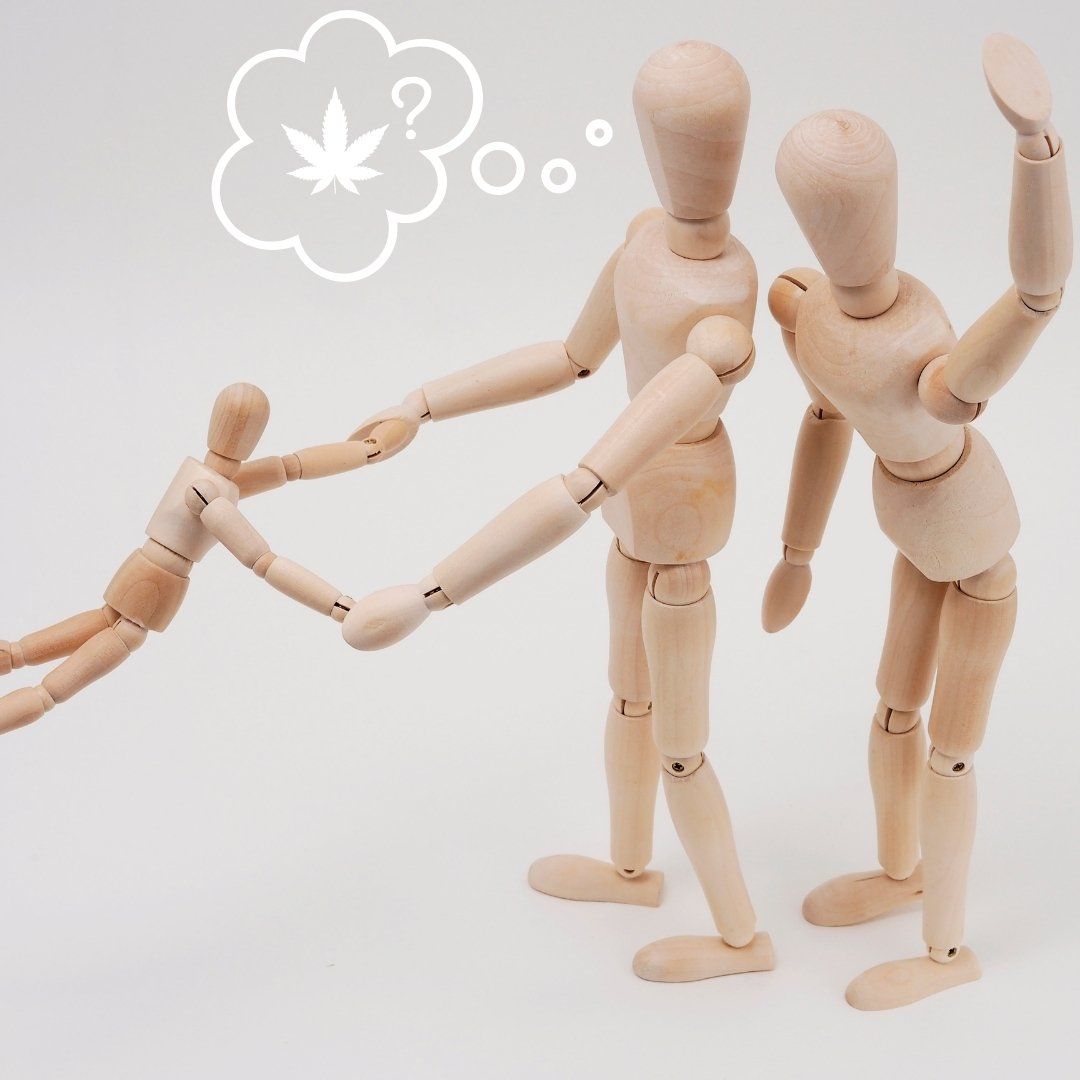
By Nakiesha Jordan
•
February 28, 2021
Cannabis may help improve various aspects of your life however even today cannabis users can face stigmas, especially when it comes to parenting. Too often the myth of the lazy cannabis user is utilized to judge and stereotype and can be hurtful to those it is targeted at. Today we will analyze this myth and ways that cannabis using parents can combat it! The myth of the lazy stoner came about shortly after the 1937 Marijuana Tax Act which criminalized all but industrial use of cannabis. Racism and prejudice created an association between immigrants and cannabis use creating negative stereotypes. These stereotypes were furthered by the War on Drugs in the 1970’s which repealed the Marijuana Tax Act claiming that cannabis held no medicinal value. Cannabis has a long history of being used for therapeutic and recreational purposes dating as far back as 500 BCE in places such as China and Siberia. In the United States during the 1800’s various different cannabis extracts were commonly sold in pharmacies and prescribed to those looking for symptom relief by doctors. Today parents struggling with chronic illnesses often turn to cannabis use to help improve their quality of life. Due to being able to find symptom relief, parents who use cannabis are able to better enjoy their time with their children and can be more attentive to them. Cannabis may be able to help parents be able to engage in more activities and keep up with the physical demands of parenting, proving the lazy stoner stereotype is just a myth! Knowing why the stereotypes exist is one thing but figuring out how to handle explaining to other people or even your children can be a difficult situation. Using cannabis is a private matter, so you should not feel pushed to have to divulge this information. Talking to your children about cannabis can help prepare them for comments or misinformation that they may encounter in the outside world. Explaining to them about cannabis safety such as not touching your cannabis products may help avoid unwanted situations. Explain to your children that cannabis use is for adults 21 years or older and that for young children with developing brains it is not a safe product for them to consume. As an adult you should always keep your cannabis stored properly and locked up out of reach! Avoid smoking in your home as cannabis smoke can be harmful for children. Make sure there is someone to care for your children for you while you are consuming cannabis and do not use cannabis products when you are planning to drive. Marijuana products can be mistake for food or candy by children, so make sure to store them out of sight. If a child consumes cannabis products call the poison control hotline or bring them to the emergency room. Communicating with your loved ones about cannabis can help bring the family together and develop stronger bonds through honesty and openness. A recent study shows that 1 in 8 people in the United States use cannabis, so maybe more adults than you know consume cannabis! If cannabis helps you be a better parent to your children, then ignore the stigma and just enjoy life’s precious memories!
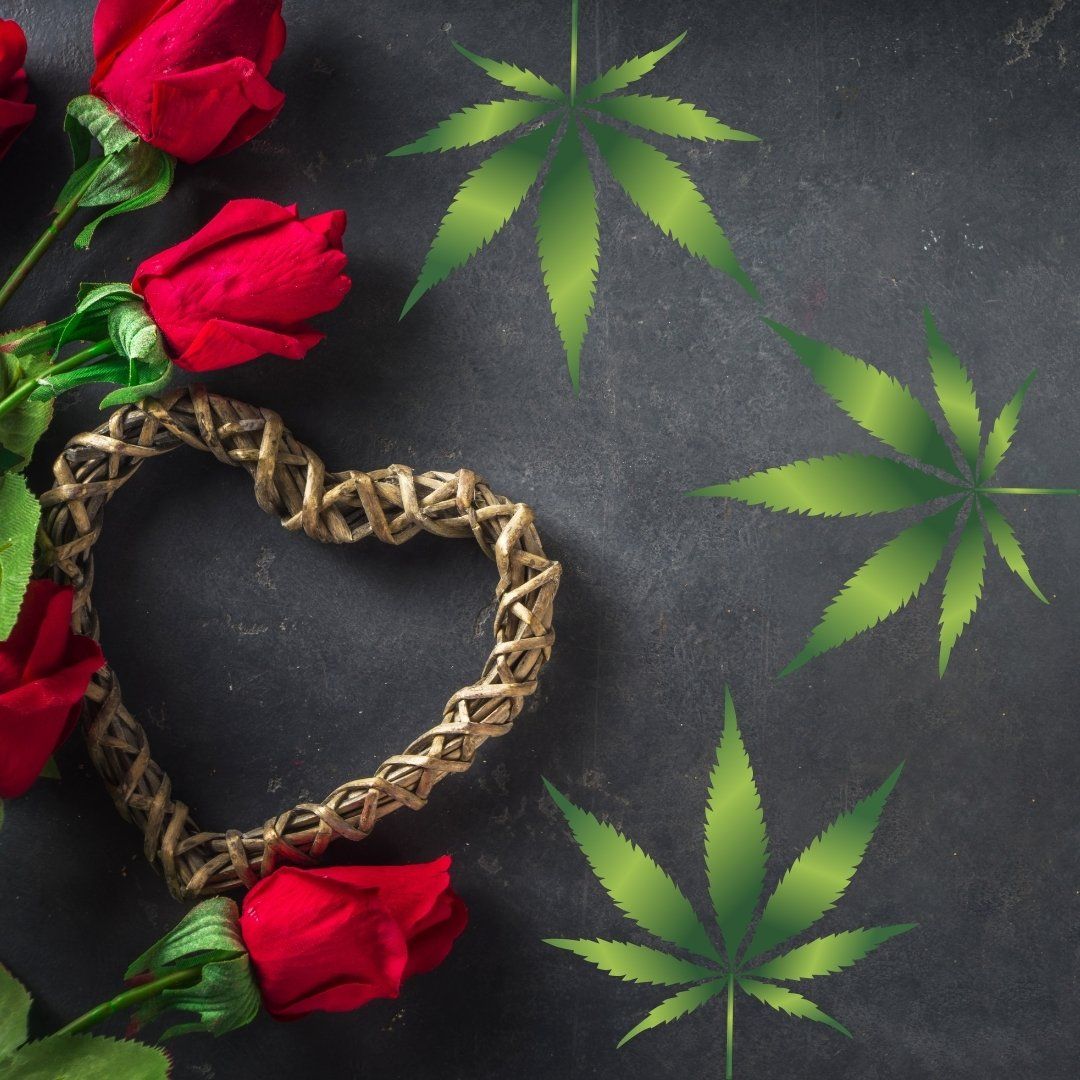
By Nakiesha Jordan
•
February 10, 2021
Valentine’s day is quickly approaching and you’re unsure of what to buy for the cannabis lover that you love? No worries, we got you covered! Here are some Valentine’s Day gift ideas just for you. Edibles are an excellent option for gift giving as they don’t require any accessories to consume! From chocolates to gummies, oil applicators, tinctures, capsules, and hard candies, the options are endless as to what you can choose. With so many options, where do you begin? Start by thinking about the lifestyle of the person you are purchasing for. Do they have dietary restrictions? Are they new to using edibles? If your cannabis lover is new to edibles it is always best to buy an edible with a lower potency per piece. Remember the advice of start low and go slow as this will help prevent the over consumption of THC edibles. Edibles will take around 2 hours to digest and may last 4-12 hours. Most edibles will have an easy to distinguish 1-5mg serving size. This may be a great starting dose for a beginner. You may want to avoid making your own edibles for you or your lover’s first edible experience, but if you do cook with cannabis oil make sure to know how much THC will be in each serving so that you can inform your loved one. Ask your budtender for recommendations and educational handouts on edibles that you can include alongside your gift! If you are in the romantic mood you can gift a topical to your lover. Massage oils, salves, lotions, patches, and intimate lubricants are all great for getting closer with your partner. The effects of the topical may provide localized relief within moments and may last for 4-12 hours depending on the type of topical used. Most topicals will not produce a psychoactive high but make sure to ask your budtender if the one you are purchasing may produce the effects you are looking for. Topicals may help ease sore muscles and may provide body relaxation so you can recover from your passionate night! Another great option would be pre-rolls! Pre-rolls are a convenient way to get high and are small enough to fit in almost any gift bag! Want something new to add with your gift? Try a chillum! The chillums we currently sell are reusable glass pipe pieces that come pre-packed with a small amount of flower. It’s a great way to try a new strain or for a quick smoke session before your Valentine’s Day dinner date. Smoking brings feelings of nostalgia but what if you want to gift a more discreet option? If this is the case then vape cartridges may be what you’re looking for! Vapes offer a portable and smell less option for a date that is on the go. Like almost any smoking consumption method the effects are nearly immediate and may last for a few hours. Due to the higher potency of vape cartridges euphoria and bliss may be inevitable and some strains may act as an aphrodisiac. Need something stronger? Ask your budtender for recommendations on concentrates! If you are still unsure of what would be a perfect gift for your loved one or for yourself please reach out to us! We are here to answer your questions and help guide you towards the best cannabis experience possible. If you are interested we currently have a Valentine's Day Bundle that is available for a limited amount of time! You can find it on our online menu through the link below!
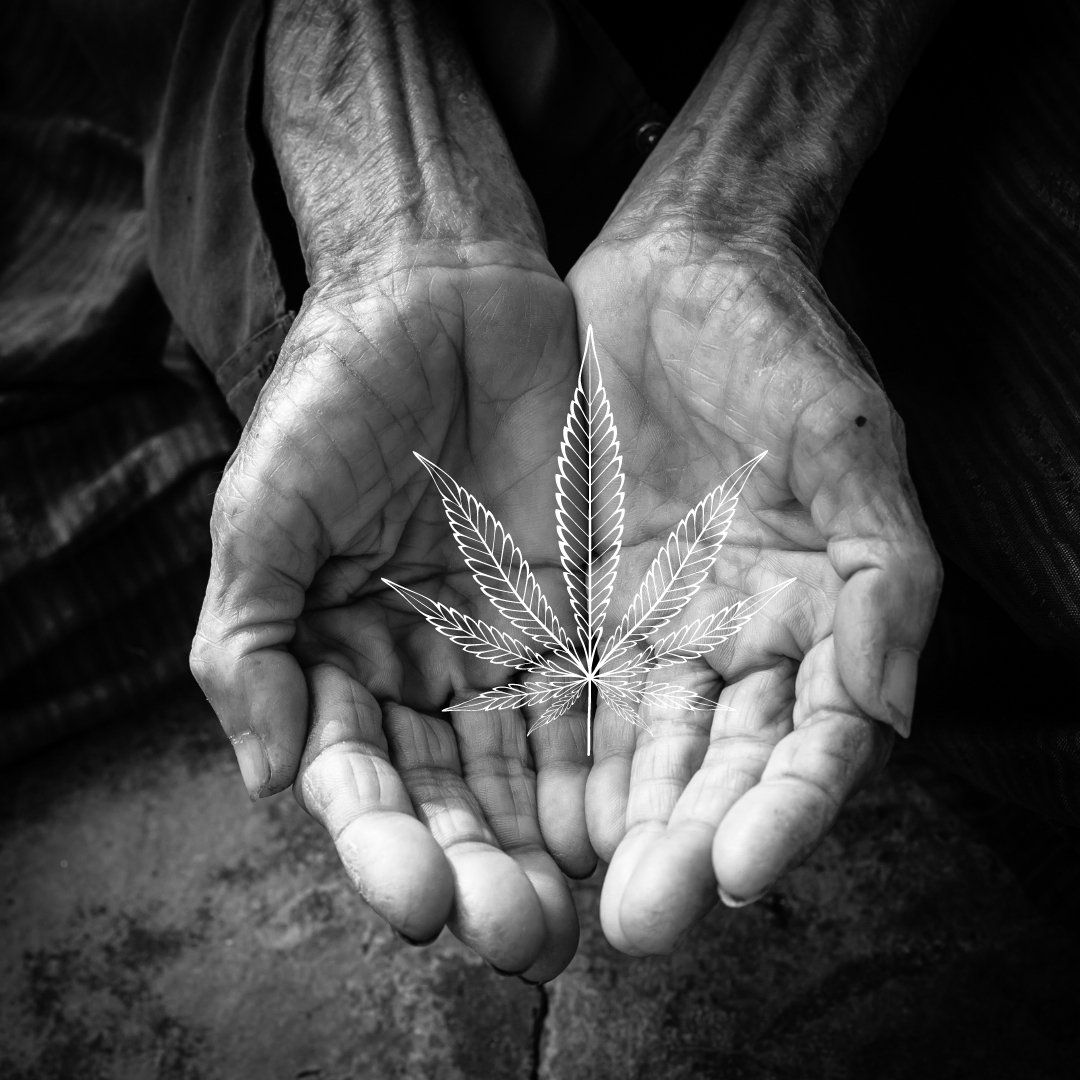
By Nakiesha Jordan
•
February 1, 2021
Cannabis use within the 55 and over community is vastly growing! Cannabis is often used by seniors for a variety of reasons that can include symptom relief from a variety of conditions such as glaucoma, chronic pain, Alzheimer's and Dementia, cancer, anxiety, eating disorders, mood disorders, Arthritis, insomnia, and more! Often times cannabis is used to enjoy the moment! Cannabis can help make daily activities more delightful and engaging, which can help encourage those 55 and older to be more social and present. Visiting a dispensary creates an opportunity for social interactions which can reduce isolation and feelings of loneliness for your loved one. As long as the members of the family or close friends are over 21 dispensary trips can be a unique and fun opportunity to bond with one another. We encourage you to bring a supportive friend or family member to make you feel more comfortable during your first visit! Stereotypes surrounding cannabis use can be intimidating due to stigmas and prejudice that many still may have, but understand that these are just myths! Cannabis use for recreational and medical purposes is vastly growing. A recent study states that one in eight people in the United States use cannabis and that cannabis use among the 55 and over community has increased 75% since 2015. So you won’t have to feel alone in using cannabis as there is a large community of people that may be able to provide support and teach you more about it’s possible benefits! Studies have stated that terpenes in cannabis products may offer therapeutic benefits and terpenes such as pinene may help with focus and memory, adding to the exciting experience of using cannabis. Terpenes are the aromatic compounds of the cannabis plant that gives each cannabis strain it’s unique smell, flavor, and effects. Cannabinoids are the chemical compounds within the cannabis plant that interacts with your Endocannabinoid System creating therapeutic benefits. Terpenes and cannabinoids are just as important as THC and CBD content, so make sure to communicate with your budtender the flavor or experience you are looking to gain! CBD products may offer non psychoactive therapeutic benefits while THC may offer a euphoric high feeling. CBD, THC, and other cannabinoids can be categorized into three strains. These strains are Sativa, Indica, and Hybrids. Sativa strains may have energizing cerebral effects while Indica strains may offer more sedative body focused effects. Hybrid strains combine the effects of Sativa and Indica strains which may offer more balanced and relaxing effects. The options are truly endless when it comes to the experiences you can have with cannabis! So where to begin on selecting the best cannabis products for your lifestyle? You can start by talking with your budtender who will be able to help guide you through the selection process. Your budtender will be able to help you decide on a method of consumption and may recommend different accessories to use. Smoking, vaping, and edibles are the most popular consumption methods. Smoking cannabis flower can be done through using glass handpipes, rolling papers, and a bong. Vaping will often require an additional universal 510 thread battery, but there are disposable vape pens that come with the battery pre-attached. Edibles are tasty treats infused with cannabis oil and may tempt you to have another bite. Be careful on the dosage you are ingesting and stick to the lowest dose! Once you are home you can journal the effects of your cannabis products to help you discover what works best for you. Remember, when consuming cannabis products start low and go slow! Using cannabis can be rewarding experience if done properly, so reach out to us here at Local Roots Cannabis Crafted to clarify any questions you may have. We will make your experience comfortable and enjoyable while taking the time to go over cannabis knowledge that you may need!
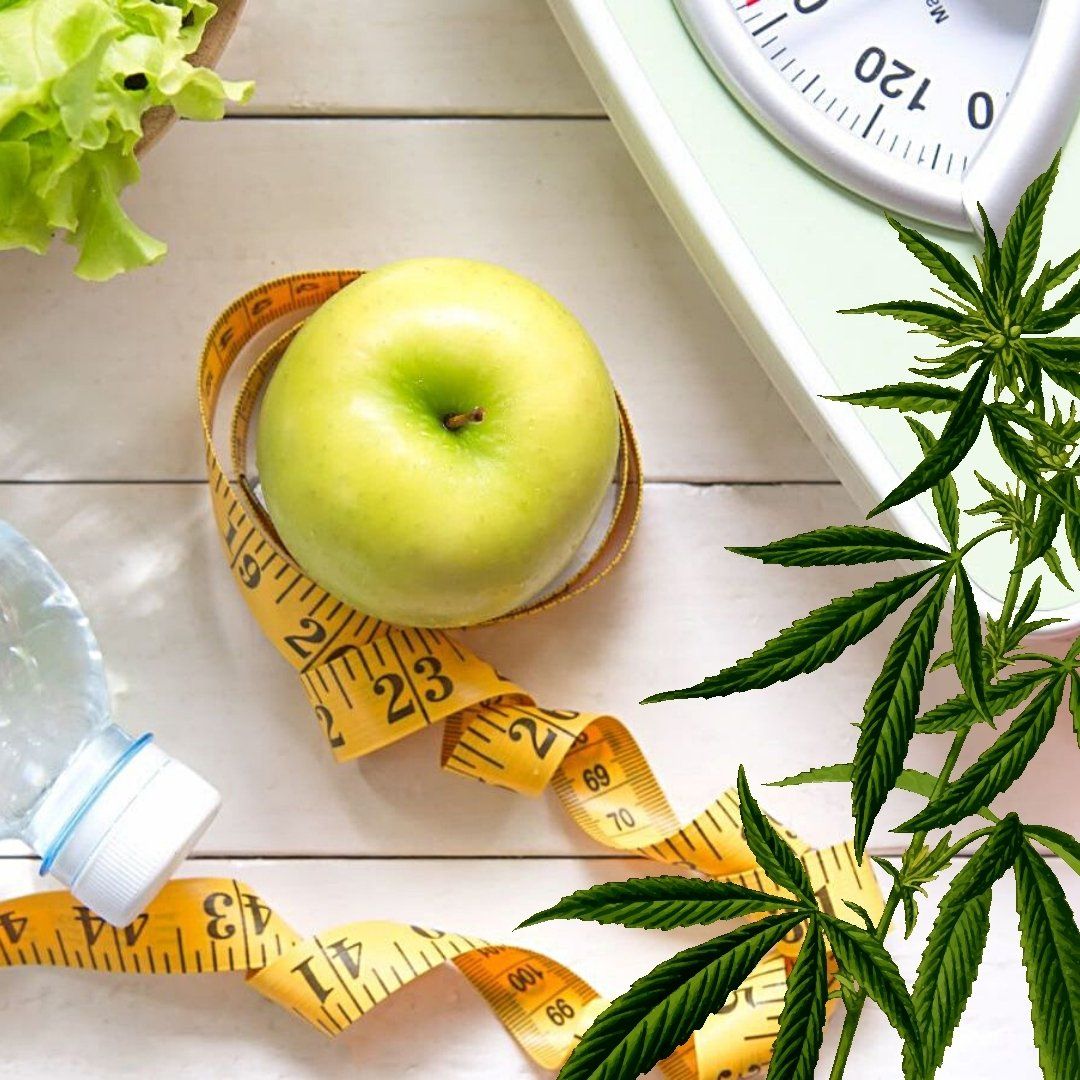
By Nakiesha Jordan
•
January 26, 2021
CBD is known to do amazing things to help aid many in their health-conscious goals and routines. With all the health benefits from CBD can it also be used to help aid weight loss goals? We’ll explore this and learn more about CBD’s effects on the body in this post! CBD is the non-intoxicating part of the cannabis plant that may have anti-inflammatory, antioxidant, and anti-tumor properties. CBD is a well known and researched cannabinoid. Also known as cannabidiol, CBD was shown in various studies to have an effect upon fat loss by influencing your body to oxidize fat cells. CBD may influence fat loss through stimulating genes and proteins to break down and oxidize fat cells, increase mitochondria activity, and decrease expressions of proteins involved in fat cell regeneration. CBD in studies has been shown to oxidize fat cells by changing white adipose tissue into brown adipose tissue to be oxidized thus may aid in improving overall health. CBD may also help to limit food cravings and reduces fat cell growth through this as well. CB1 receptors being overly stimulated can also play a role in weight gain that CBD has been shown in studies to help reduce. CBD prevents the CB1 receptor from intaking THC which reduces the chance of the receptor being over stimulated. The average Western diet is often high in omega 6 and low in omega 3 fatty acids which can throw off the Endocannabinoid System as well. An Endocannabinoid System that is off balance can cause within the body inflammation, hunger cravings, insulin resistance, and may heighten the risk of disease. The Endocannabinoid System also may play an impact on metabolism and how our body burns calories. When selecting CBD options to use for your health goals, making sure to pick an option that has the highest chance of bioavailability is important! Edibles, such as tinctures and capsules, limit bioavailability down to around 6% due to digestion. Smoking or vaping has a bioavailability of around 30%, which makes it a great choice for consuming larger amounts of CBD. To increase the chances of edibles becoming more bioavailable just add fats! Sunflower lecithin, olive oil, butter, hummus, and more will improve your chances of absorbing the most amount of CBD possible. CBD consumption for weight loss may be most effective when combined with a healthy diet and exercise routine and can aid in recovery post workout! Adding CBD before a workout may help you workout for more time with less body discomfort. Now that you know more about CBD it’s time to add it to your cart and accomplish your individualized health goals!
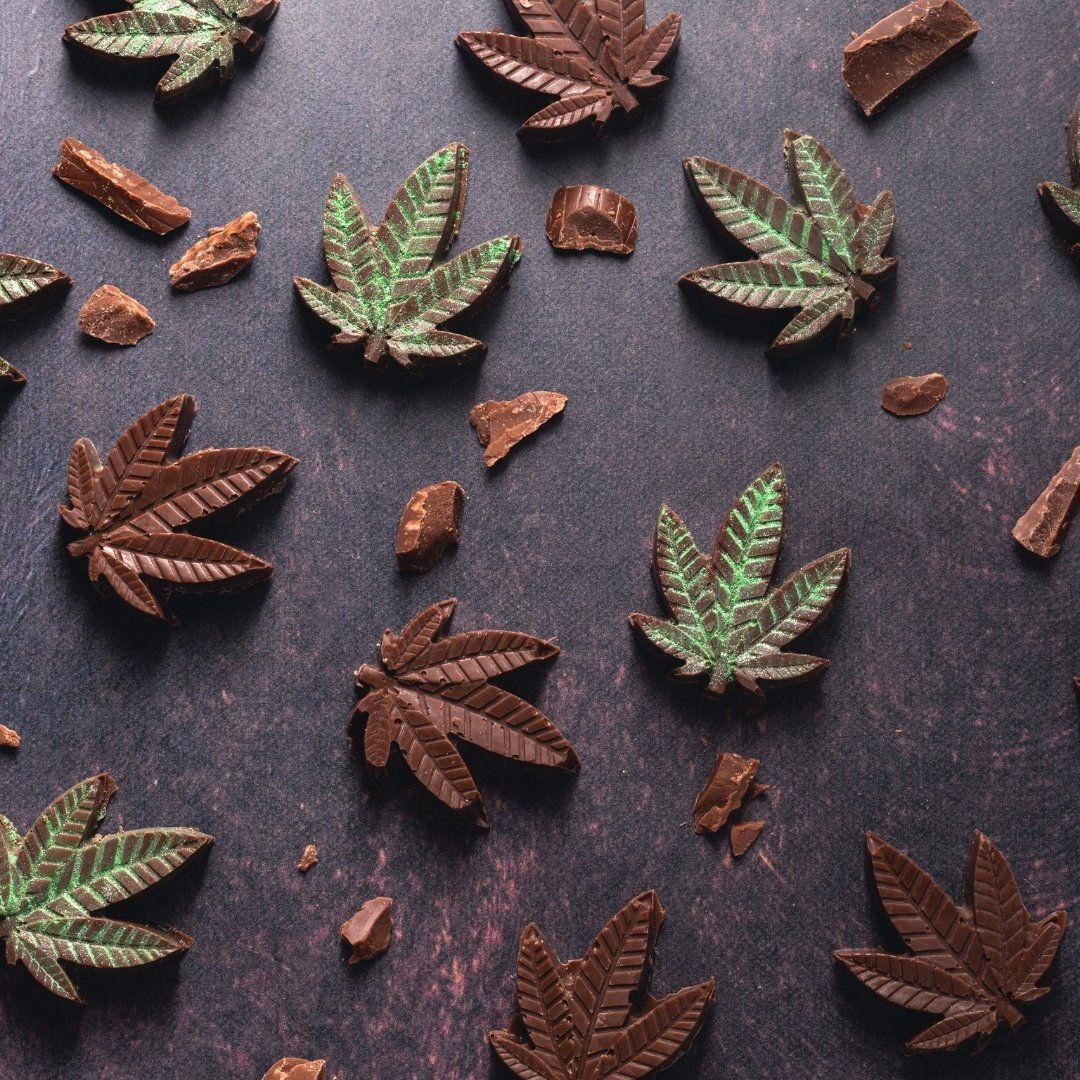
By James Nunn
•
January 26, 2021
It’s your first time taking an edible but you’re confused on what to do? No worries, we are here to help! Edibles come in a variety of different forms! These forms include tinctures, candy and baked goods, capsules, oils, and beverages. Edibles are made using CBD, THC, or the combination of the two. THC, also known as tetrahydrocannabinol is the psychoactive cannabinoid in the cannabis plant that produces a psychoactive high. CBD, or cannabidiol is the non psychoactive part of the cannabis plant that may offer therapeutic benefits. Some edibles are formulated to be strain specific to have indica, hybrid, or sativa effects. Indica strains may offer more body focused effects that may help you find rest and relaxation. Sativa strains may offer cerebral effects that are energizing and uplifting. Hybrid strains are the combination of sativa and indica strains with euphoric and balanced effects. The options are endless as to the experiences you can have! Finding the perfect edible for you is easy, just follow your taste buds! Are you craving chocolate, gummies, or cookies? On a diet or have food restrictions? No worries, capsules and tinctures oftentimes have no sugar, barely any calories, and many are allergy free. Once you select the form of edible that best fits you and the effects you are looking to achieve the next step will be to prepare to take them! For your first time taking an edible make sure to ask your experience guide for advice and plan ahead, be at home in a comfortable area, and have some snacks on hand to eat something with your edible to reduce the chances of over consuming THC. Make sure to have a journal on hand to write down your experience so that you can use that information to find your perfect dosage. Dosing with edibles can be a tricky thing, especially since they can come in the form of tempting treats. Edibles can be a safe and fun way to enjoy cannabis, it just takes some trial and error to find the right dose for you! The best place to start with edibles is at a low dosage, so what does that mean for you? The recommended serving size for a beginner is 1mg to 5mg of THC. You can always take more milligrams, but you can’t take less, so it is important to know your limits! Check your packaging on your product for dosing instructions to make sure you know how much to take. Once you take your starting dosage wait 2-3 hours for the effects to begin. These effects are going to come on gradually and may be strong depending on how much you take or how your body reacts to it. Eating fatty foods with an edible may impact how THC is absorbed within your body. Fats make THC more bioavailable for your body which can make the effects be more potent. If this is not your goal opt for snacking on a carbohydrate rich food with your edible. Starting at a lower dose reduces the likelihood of adverse reactions. These reactions include but are not limited to dizziness, nausea, paranoia and anxiety, red eyes, lethargy and fatigue, and impaired memory. In order to help the symptoms of an accidental over consumption of edibles, start by remaining calm! Edibles last about 4-12 hours, so while you are waiting for the symptoms to pass you can take some CBD to counteract the THC, chew on some peppercorn, take a hot or cold shower, eat something, hydrate, or just sleep it off! If you feel in danger at all please do not hesitate to call a health care professional.

By James Nunn
•
January 29, 2020
Cannabis use as an herbal remedy and intoxicating substance date back thousands of years. The oldest written record of cannabis use came from Chinese emperor and healer, Shen Nung, who wrote about cannabis in 2757 B.C.E. Cannabis as the Chinese word “ma” was included in the first documented pharmacopoeia journal dating around the same time. Wild cannabis plants of both marijuana and hemp species were used in teas, pastes, and even in meals throughout Asia and northern Africa. “Bhang”, a drink of cannabis and milk, was used in India as an anesthetic as early as 1000 B.C.E. Historians have gleaned that cannabis was used in the ancient eastern world as a remedy for gout, cramps, and inflammation. Colonization, war and trade during the spread cannabis use from native peoples of Asia, Africa, and America to Europeans. New World settlers recorded “Indian hemp” provided ecstasy and laughter in the 1600s. You likely know that hemp fibers were crucial for uniforms and other supplies during the Revolutionary War. At the turn of the 19th century, French troops under Napoleon Bonaparte were introduced to cannabis during their invasion and occupation in Egypt. Soldiers and scientists alike were interested in the substance; despite Bonaparte’s swift outlaw of its use, cannabis quickly spread to France. By the 1840s, cannabis was quite mainstream among doctors and it was commonly used to treat headaches, sleep disorders, and to increase appetite. Around this time, research was published in The Lancet, one of the oldest journals of medicine, suggesting cannabis may assist with the withdrawal and side effects of opium. Even Queen Victoria reportedly used cannabis for her menstrual cramps. In 1850, cannabis was added to the United States pharmacopoeia. It was commonly used to treat injured soldiers during the Civil War. Not long after, cannabis Indica tincture was a household drug. Apothecaries made their own varieties until the pharmaceutical industry emerged and cannabis tinctures began to be branded. When aspirin was created in 1898 along with the “pill” form of medication, the active compounds in the cannabis plant had not yet been isolated, and the variance in cannabis plant strength and efficacy had been noticed. Medicine began trending to individual molecules for treatment. Once medicine began to be measured in exact milligrams in the early 1900s, cannabis tinctures and herbal therapies quickly began to seem outdated. Though cannabis continued to be prescribed, economic instability and rampant fears tied to immigration and job loss around the Great Depression led to the rise of the term “marijuana” or “marihuana” leading to the prohibition of the plant. Massachusetts became the first state in the nation to outlaw cannabis in 1911. Lobbyists and leaders of the Federal Bureau of Narcotics (a precursor to the DEA) supported the Marihuana Tax Act of 1937, which imposed severe taxes and penalties on physicians who prescribed cannabis as well as companies who were willing to make and sell cannabis products. The act was effective and, despite push back from the American Nurses Association, cannabis was eventually removed from the United States pharmacopoeia in 1941.
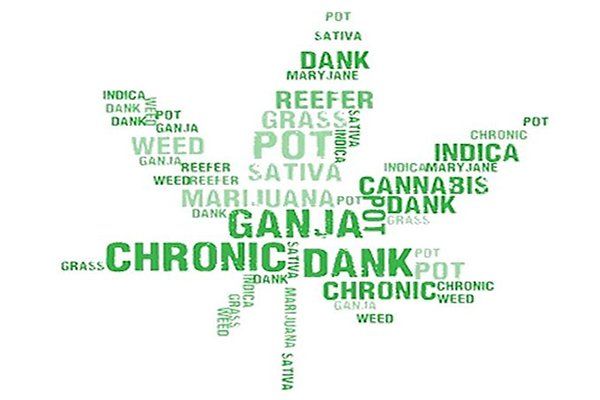
By James Nunn
•
September 20, 2019
Marijuana became taboo in the 20th century. Throughout generations of prohibition, cannabis has morphed in colloquial identity from marijuana to reefer to pot to the devil’s lettuce to weed. Words we didn’t dare utter in front of our family members. Words we kept outside the home. Cannabis may still be a touchy subject for you or for your friends and family, which is why at Local Roots, we have created a safe space for all your cannabis questions and pent up cannabis experiences. We offer a semi-private area for conversation or consultation on site at our cannabis retail outlet, and we are happy to walk you through or just listen to your cannabis journey so far. We’ve compiled a list of terms to know to talk about cannabis today: ANANDAMDE : A cannabinoid produced in the body that mimics the structure and effects of tetrahydrocannabinol (THC). Discovered in 1992, it was named for the Sanskrit word “Ananda” which means “bliss”. CANNABIDIOL (CBD) : One of the two primary cannabinoids found in the cannabis plant. CBD is the non-psychoactive cannabis compound commonly associated with hemp. CBD in tandem with tetrahydrocannabinol (THC) may be the most effective ratio for achieving your endocannabinoid balance without the unwanted “high” effect commonly associated with cannabis. CANNABINOID : A compound occurring naturally in the cannabis plant and in the mammalian body. Plant cannabinoids are called “phytocannabinoids” while bodily produced cannabinoids are called “endocannabinoids”. Both types of cannabinoids act on neurotransmitter receptors located all over the human body including in the brain and in immune cells. CANNABIS : The genus under which the species marijuana and hemp are classified. States in which medical marijuana are legal often use the term “cannabis” in an attempt to destigmatize their industry and plant. DECARBOXYLATION : Refers to a chemical reaction where plant cannabinoids in their acidic form (CBDA, CBGVA, THCA) are heat-activated through convection or conduction. ENDOCANNABINOID SYSTEM (ECS) : The largest system of receptors in the human body. The endocannabinoid system is a natural regulator, and may be responsible for hundreds of internally controlled responses including memory, reflexes, mood, pain sensation, and inflammation. ECS receptors, called CB1 and CB2, are found in various parts of the brain, organs, connective tissue, and immune cells. ENTOURAGE EFFECT : Also known now as the “Assembly Effect”, suggests that all of the plant compounds including major and minor cannabinoids and terpenes will have a more desired and stronger effect than isolated CBD or THC manufactured products. TERPENES : Organic compounds that secrete from cannabis plant glands which provide the nuanced fragrance and flavor of various strains. TETRAHYDROCANNABINOID (THC) : One of the two primary cannabinoids found in the cannabis plant, commonly associated with cannabis-marijuana. THC is the psychoactive compound, which after inhaled or ingested, may have a mind-altering effect. TRICHOMES : Resin-glands, often called “crystals”, which contain cannabinoids and terpenes.

By James Nunn
•
September 3, 2019
Local Roots is holding a Job Fair and Cannabis Information Session for Fitchburg area veterans on Saturday September 7th. The event will take place in the Garden Room at the Fitchburg Public Library (610 Main St) from 12pm-2:30pm. Veterans risk their lives to defend the homeland. They are taught to hold the line in the face of danger. They are told no person can hold a candle them: soldier, fighter, pilot, mechanic, frogman, marine, and that if they’re strong, they’ll make it home. Some join for glory, some join for love, some join for a path to their future. And the veterans don’t see the front – they won’t admit that they are the lucky ones. And whether or not they see the banality of war from the inside or from the outside, they do not leave the same as you came. The homeland, their home, even their family, is different now, too. Adjusting to civilian-life after the military can be a difficult transition. When the recruiters talk about glory, they don’t talk about lack of appreciation. They don’t tell talk about the sacrifices of mind, body, spirit, and friends, and their resounding impact, if you manage to hold on your life. They don’t let on about the difficulties of the Department of Veterans Affairs. They don’t talk about having a medical condition; their mental or physical losses; the indefinite label as “disabled”; the benefits system and it’s psychological impact. Recent statistics show that over 20 veterans are lost to suicide each day; an additional 20 are lost to accidental overdose. Individual people finally recognized as a statistic. In Washington State, medical cannabis patients and veterans, Patrick Siefert and Randy Madden, formed the non-profit cannabis activist group, Twenty22Many, to call awareness to their fallen sisters and brothers, support one another, and fight veteran suicide. Patrick had owned a medical collective called Safe Access Point, and he recounts meeting Randy, saying, “He [Randy] wouldn’t even look at me for the first three months”. Veteran and cannabis activist in Massachusetts, Randy MacAffrie, told Blunt Talk podcast that while advocating for Question 4 (2016 MA Marijuana Initiative), the VA found him to be “too active” and cut his benefits in half. It’s the age old stigma of mental health and disability at work: if you don’t look or act disabled, you must not be. Randy was able to get his benefits back (with haste, with the help of Senator Warren); he tells his story to exemplify one of the dozens of reasons veterans stay quiet about their cannabis use. Approximately, 1 in 5 veterans have used cannabis in the last month, and 1 in 4 veterans support medical cannabis. In contrast, VA physicians are often in the dark on their patients cannabis use and how cannabis might interact with the other drug they’re prescribing their patients – and they are legally bound not to recommend cannabis treatments. While the VA wants their patients to talk about their cannabis use, veterans fear the backlash will affect their benefits, the ability to get a home loan, and other important areas of their lives. There is legislature being proposed and debated right now that argues for equal access for vets and would allow the VA to research the impact and effects of medical cannabis on a variety of conditions. “Helping veterans…really is a trickle down effect,” said Randy MacAffrie, referring to political leaders who recognize the need for medical cannabis access and recognition for veterans. He says it helps the entire community. “When you’re able to help those who have risked their lives for it, they have families in those communities, those families have friends…” said Randy. Veterans are one of most diverse demographics in the country, and cannabis legalization transcends political parties and other cultural binaries. “Being able to unite around veterans just makes sense,” he said.

By James Nunn
•
May 28, 2019
Hey, have you heard the news? Thanks to the THC patch, now you can get your daily dose of tetrahydrocannabinol without the need for blunts, joints, bongs, edibles, creams, or tinctures. We know it sounds like science fiction, but it’s not. In fact, transdermal patches (a.k.a. transdermal delivery system or TDDS) have been around for almost 40 years. Way back in 1979, the FDA approved a scopolamine patch for motion sickness. Not long after that, the FDA approved the nitroglycerin patch for individuals with heart problems. Other transdermal patches followed shortly thereafter. The most famous TDDS is the nicotine patch introduced in 1991 to help tobacco users kick the smoking habit. With the legalization of medical and recreational cannabis in the early part of the 21st century, the next logical step was the THC patch. And now, they’ve finally arrived. But what are THC patches? And how exactly do they work? The experts at Bay State Cannabis will answer those important questions and many others. We’ll also talk about what strains work best and the difference between a THC patch and a THC cream (topical). First, though, it’s vital that you understand what you’re getting when you slap on a THC patch. What Is THC?

By Nakiesha Jordan
•
March 15, 2021
Starting off new to cannabis use can be intimidating with so many new terms to learn. Cannabinoids, terpenes, Endocannabinoid System, and more can appear confusing or complex but there is no reason to feel overwhelmed! This blog will break down some of the common cannabis terms so that you can use this knowledge to feel more empowered when selecting cannabis products! In order to understand the foundation of common cannabis terms you will first need to know what the Endocannabinoid System is. The Endocannabinoid System is a complex cell signaling system that regulates body functions such as homeostasis, your nervous system, and your immune system. The Endocannabinoid System also produces the runner’s high. The Endocannabinoid System involves endocannabinoids, receptors, and enzymes that help your body to function properly. The main endocannabinoid receptors are CB1 and CB2 receptors. CB1 receptors are found predominantly in your Central Nervous System where as CB2 receptors are found in your Peripheral Nervous System. Enzymes are useful for breaking down endocannabinoids once they have fulfilled their purpose. Now that you know a bit about the Endocannabinoid System let’s discuss how cannabinoids such as THC and CBD interact with it! Cannabinoids are the compounds within the cannabis plant that produce effects within the body by interacting with endocannabinoid receptors. Cannabinoids can regulate how cells communicate by directing how they send, receive, or translate their functions. Some common cannabinoids include CBN, CBG, CBC, THCV, CBD, and THC. THC, otherwise known as Tetrahydrocannabinol, is the most common psychoactive cannabinoid within the cannabis plant. It is the cannabinoid that interacts with the Endocannabinoid System producing a feeling of being euphorically high. CBD, known also as Cannabidiol, is the non-psychoactive cannabinoid within the cannabis plant that may offer therapeutic benefits. CBD can block out THC from interacting with endocannabinoid receptors when taken in larger amounts than THC which may help lessen its effects. When THC and CBD are taken in equal amounts the effects of THC are heightened and may produce a more balanced and pleasurable high. TAC is another acronym that is seen on a dispensary’s menu. TAC is Total Active Cannabinoids. It measures the potency of the product through adding the amounts of the cannabinoids, terpenes, and other compounds present within it. What are Terpenes you ask? Terpenes are the aromatic compound of the cannabis plant. Terpenes are what gives each cannabis strain its own unique taste, smell, and effects. Terpenes are known to possibly provide therapeutic effects. Terpenes are oftentimes more important than a high THC content when choosing the affects you wish to experience. When terpenes and cannabinoids work synergistically together to create many unique benefits and effects caused by the full spectrum aspect within a product it is called the Entourage Effect. Terpenes and cannabinoids each have different boiling points. The different temperatures when heating cannabis flower or oil causes different terpenes and or cannabinoids to be more bioavailable for your body. When in doubt about what temperature to use always opt for a lower temperature setting. There are three different strains that cannabis can be categorized in. Cannabis Sativa, Cannabis Indica, and Cannabis Ruderalis (Hybrid). Cannabis Sativa plants tend to have longer leaves and grow in warmer climates. The effects of Sativa strains may be energizing, uplifting, and may have more cerebral effects. Indica strains tend to have shorter leaves and grow in cold climates. Indica strains may produce sleepy and more body focused effects. Hybrid strains are the combination of Indica and Sativa strains and may have more balanced, relaxing, and or creative effects. Some other terms you may see or hear in a dispensary tend to be in regard to products. Cannabis flower is the bud of the cannabis plant, pre-rolls are cannabis filled cigarettes, topicals are cannabis infused lotions and body care items, and edibles are cannabis infused food, drinks, capsules, or oils. Some terms you may not be familiar with are chillums and concentrates. Chillums are glass pipe pieces that can come pre-packed with flower. Cannabis concentrates are extracted THC products that are intended to be smoked or vaporized. Concentrates come in different textures and are often very potent. They can be smoked sandwiched in between flower or vaporized in a dab rig or concentrate vaporizer pen. Cannabis concentrates, like cannabis flower, can be decarboxylated to make your own edibles! Many people start with vape cartridges before moving to concentrates, however there are a few that are less potent. Kief, moonrocks, and hash rosin are great when transitioning to trying concentrates. Kief is the extracted trichomes from the cannabis plant and can be sprinkled and smoked on top of flower. Moonrocks are cannabis flower rolled in cannabis oil and kief and can be smoked with flower. Avoid placing your moonrock in a grinder! Now that you know a bit about some of the common terms used within the cannabis industry you can share your knowledge with others or use it to discover the best products for you! If you still have questions don’t be shy to reach out to your budtender when you are placing your order. We are always here to help!

By Nakiesha Jordan
•
February 28, 2021
Cannabis may help improve various aspects of your life however even today cannabis users can face stigmas, especially when it comes to parenting. Too often the myth of the lazy cannabis user is utilized to judge and stereotype and can be hurtful to those it is targeted at. Today we will analyze this myth and ways that cannabis using parents can combat it! The myth of the lazy stoner came about shortly after the 1937 Marijuana Tax Act which criminalized all but industrial use of cannabis. Racism and prejudice created an association between immigrants and cannabis use creating negative stereotypes. These stereotypes were furthered by the War on Drugs in the 1970’s which repealed the Marijuana Tax Act claiming that cannabis held no medicinal value. Cannabis has a long history of being used for therapeutic and recreational purposes dating as far back as 500 BCE in places such as China and Siberia. In the United States during the 1800’s various different cannabis extracts were commonly sold in pharmacies and prescribed to those looking for symptom relief by doctors. Today parents struggling with chronic illnesses often turn to cannabis use to help improve their quality of life. Due to being able to find symptom relief, parents who use cannabis are able to better enjoy their time with their children and can be more attentive to them. Cannabis may be able to help parents be able to engage in more activities and keep up with the physical demands of parenting, proving the lazy stoner stereotype is just a myth! Knowing why the stereotypes exist is one thing but figuring out how to handle explaining to other people or even your children can be a difficult situation. Using cannabis is a private matter, so you should not feel pushed to have to divulge this information. Talking to your children about cannabis can help prepare them for comments or misinformation that they may encounter in the outside world. Explaining to them about cannabis safety such as not touching your cannabis products may help avoid unwanted situations. Explain to your children that cannabis use is for adults 21 years or older and that for young children with developing brains it is not a safe product for them to consume. As an adult you should always keep your cannabis stored properly and locked up out of reach! Avoid smoking in your home as cannabis smoke can be harmful for children. Make sure there is someone to care for your children for you while you are consuming cannabis and do not use cannabis products when you are planning to drive. Marijuana products can be mistake for food or candy by children, so make sure to store them out of sight. If a child consumes cannabis products call the poison control hotline or bring them to the emergency room. Communicating with your loved ones about cannabis can help bring the family together and develop stronger bonds through honesty and openness. A recent study shows that 1 in 8 people in the United States use cannabis, so maybe more adults than you know consume cannabis! If cannabis helps you be a better parent to your children, then ignore the stigma and just enjoy life’s precious memories!

By Nakiesha Jordan
•
February 10, 2021
Valentine’s day is quickly approaching and you’re unsure of what to buy for the cannabis lover that you love? No worries, we got you covered! Here are some Valentine’s Day gift ideas just for you. Edibles are an excellent option for gift giving as they don’t require any accessories to consume! From chocolates to gummies, oil applicators, tinctures, capsules, and hard candies, the options are endless as to what you can choose. With so many options, where do you begin? Start by thinking about the lifestyle of the person you are purchasing for. Do they have dietary restrictions? Are they new to using edibles? If your cannabis lover is new to edibles it is always best to buy an edible with a lower potency per piece. Remember the advice of start low and go slow as this will help prevent the over consumption of THC edibles. Edibles will take around 2 hours to digest and may last 4-12 hours. Most edibles will have an easy to distinguish 1-5mg serving size. This may be a great starting dose for a beginner. You may want to avoid making your own edibles for you or your lover’s first edible experience, but if you do cook with cannabis oil make sure to know how much THC will be in each serving so that you can inform your loved one. Ask your budtender for recommendations and educational handouts on edibles that you can include alongside your gift! If you are in the romantic mood you can gift a topical to your lover. Massage oils, salves, lotions, patches, and intimate lubricants are all great for getting closer with your partner. The effects of the topical may provide localized relief within moments and may last for 4-12 hours depending on the type of topical used. Most topicals will not produce a psychoactive high but make sure to ask your budtender if the one you are purchasing may produce the effects you are looking for. Topicals may help ease sore muscles and may provide body relaxation so you can recover from your passionate night! Another great option would be pre-rolls! Pre-rolls are a convenient way to get high and are small enough to fit in almost any gift bag! Want something new to add with your gift? Try a chillum! The chillums we currently sell are reusable glass pipe pieces that come pre-packed with a small amount of flower. It’s a great way to try a new strain or for a quick smoke session before your Valentine’s Day dinner date. Smoking brings feelings of nostalgia but what if you want to gift a more discreet option? If this is the case then vape cartridges may be what you’re looking for! Vapes offer a portable and smell less option for a date that is on the go. Like almost any smoking consumption method the effects are nearly immediate and may last for a few hours. Due to the higher potency of vape cartridges euphoria and bliss may be inevitable and some strains may act as an aphrodisiac. Need something stronger? Ask your budtender for recommendations on concentrates! If you are still unsure of what would be a perfect gift for your loved one or for yourself please reach out to us! We are here to answer your questions and help guide you towards the best cannabis experience possible. If you are interested we currently have a Valentine's Day Bundle that is available for a limited amount of time! You can find it on our online menu through the link below!

By Nakiesha Jordan
•
February 1, 2021
Cannabis use within the 55 and over community is vastly growing! Cannabis is often used by seniors for a variety of reasons that can include symptom relief from a variety of conditions such as glaucoma, chronic pain, Alzheimer's and Dementia, cancer, anxiety, eating disorders, mood disorders, Arthritis, insomnia, and more! Often times cannabis is used to enjoy the moment! Cannabis can help make daily activities more delightful and engaging, which can help encourage those 55 and older to be more social and present. Visiting a dispensary creates an opportunity for social interactions which can reduce isolation and feelings of loneliness for your loved one. As long as the members of the family or close friends are over 21 dispensary trips can be a unique and fun opportunity to bond with one another. We encourage you to bring a supportive friend or family member to make you feel more comfortable during your first visit! Stereotypes surrounding cannabis use can be intimidating due to stigmas and prejudice that many still may have, but understand that these are just myths! Cannabis use for recreational and medical purposes is vastly growing. A recent study states that one in eight people in the United States use cannabis and that cannabis use among the 55 and over community has increased 75% since 2015. So you won’t have to feel alone in using cannabis as there is a large community of people that may be able to provide support and teach you more about it’s possible benefits! Studies have stated that terpenes in cannabis products may offer therapeutic benefits and terpenes such as pinene may help with focus and memory, adding to the exciting experience of using cannabis. Terpenes are the aromatic compounds of the cannabis plant that gives each cannabis strain it’s unique smell, flavor, and effects. Cannabinoids are the chemical compounds within the cannabis plant that interacts with your Endocannabinoid System creating therapeutic benefits. Terpenes and cannabinoids are just as important as THC and CBD content, so make sure to communicate with your budtender the flavor or experience you are looking to gain! CBD products may offer non psychoactive therapeutic benefits while THC may offer a euphoric high feeling. CBD, THC, and other cannabinoids can be categorized into three strains. These strains are Sativa, Indica, and Hybrids. Sativa strains may have energizing cerebral effects while Indica strains may offer more sedative body focused effects. Hybrid strains combine the effects of Sativa and Indica strains which may offer more balanced and relaxing effects. The options are truly endless when it comes to the experiences you can have with cannabis! So where to begin on selecting the best cannabis products for your lifestyle? You can start by talking with your budtender who will be able to help guide you through the selection process. Your budtender will be able to help you decide on a method of consumption and may recommend different accessories to use. Smoking, vaping, and edibles are the most popular consumption methods. Smoking cannabis flower can be done through using glass handpipes, rolling papers, and a bong. Vaping will often require an additional universal 510 thread battery, but there are disposable vape pens that come with the battery pre-attached. Edibles are tasty treats infused with cannabis oil and may tempt you to have another bite. Be careful on the dosage you are ingesting and stick to the lowest dose! Once you are home you can journal the effects of your cannabis products to help you discover what works best for you. Remember, when consuming cannabis products start low and go slow! Using cannabis can be rewarding experience if done properly, so reach out to us here at Local Roots Cannabis Crafted to clarify any questions you may have. We will make your experience comfortable and enjoyable while taking the time to go over cannabis knowledge that you may need!
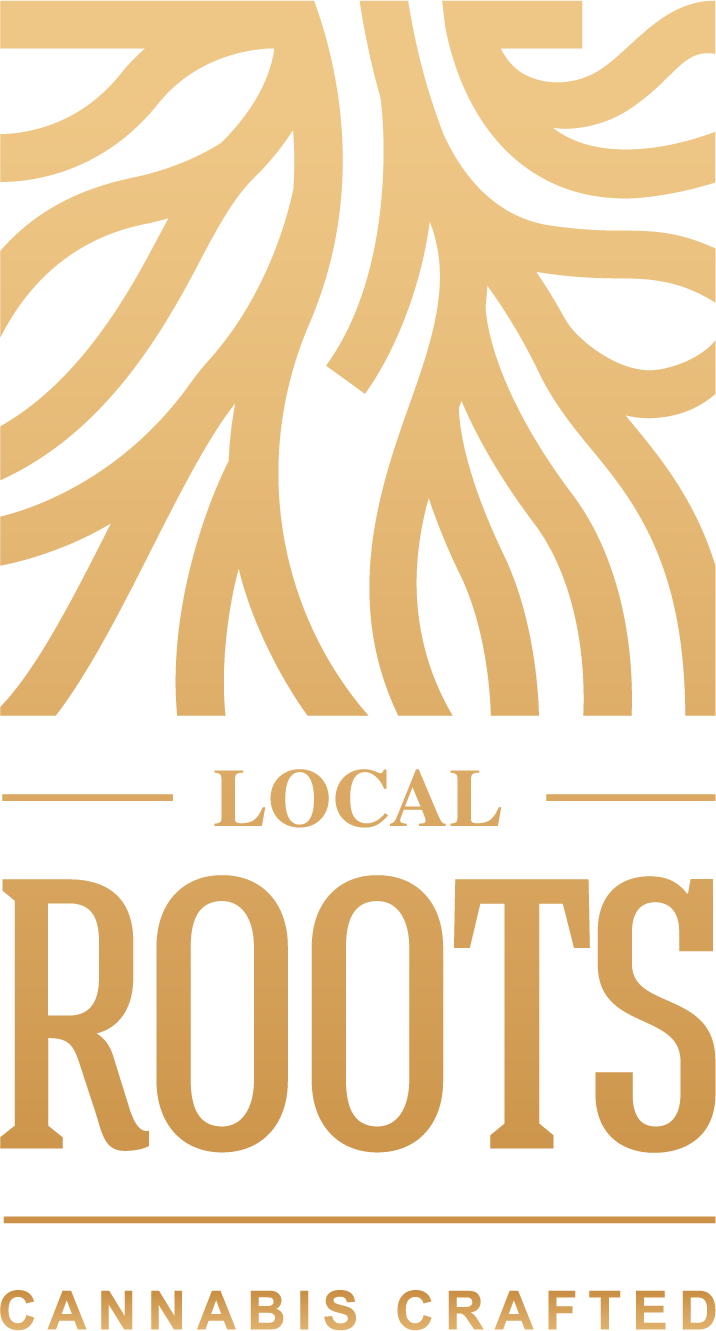
Please Consume Responsibly
For use only by adults 21 years of age or older. Keep out of reach of children. Marijuana should not be used by women who are pregnant or breastfeeding.
LocalRoots.cc
© 2025
© 2025
All Rights Reserved | LocalRoots.cc

